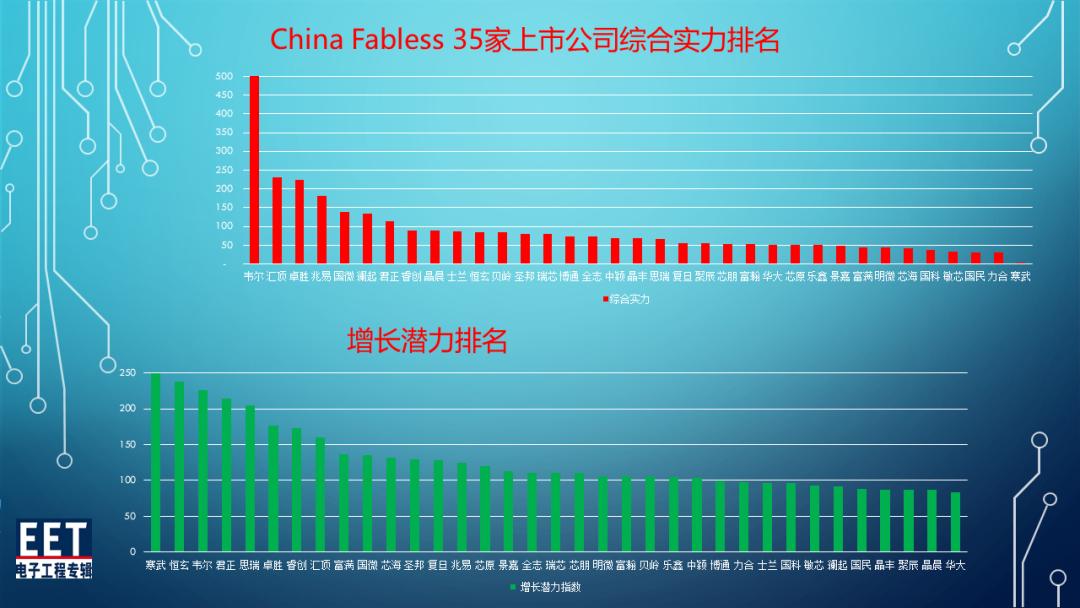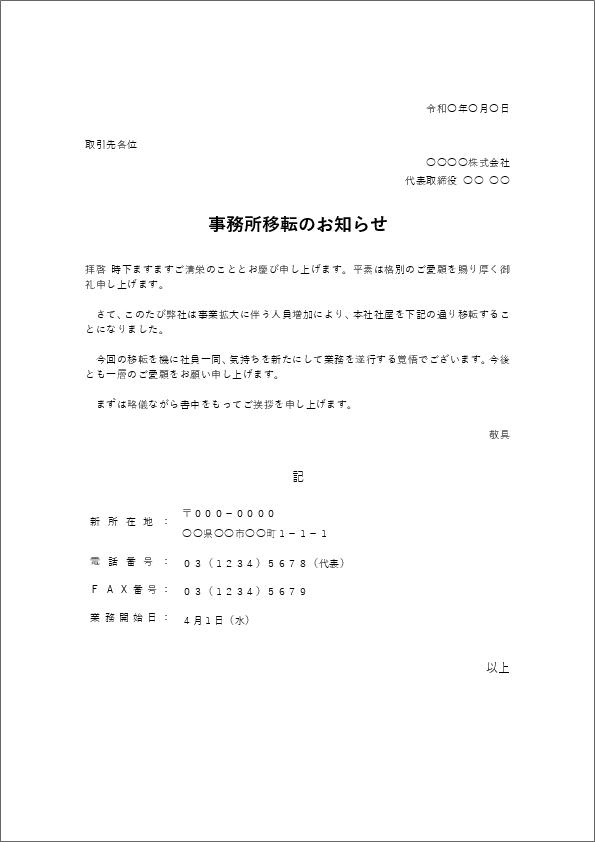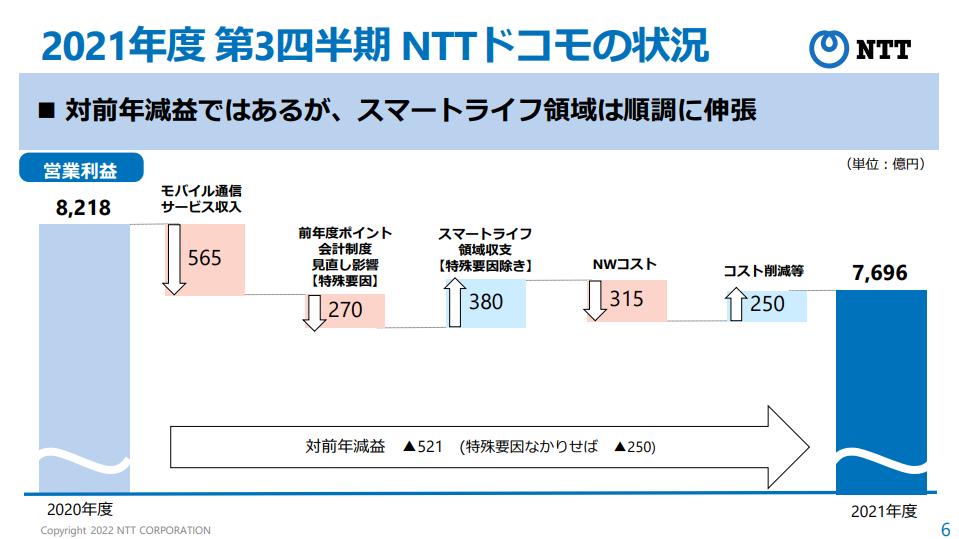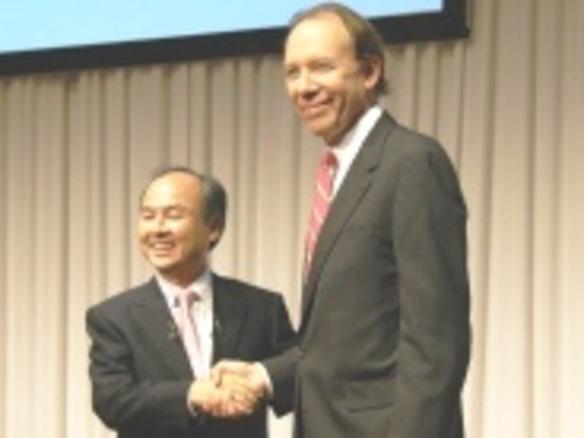Utilization of data "Three kinds of sacred treasures", what is the winning line of TROCCO that fills important pieces | Coral Capital?
It has been several years since the importance of data utilization has been recognized. With the spread of the cloud, the democratization of BI (Business Intelligence) tools for visualizing management indicators, and the rise of a large number of SaaS, it may seem that data accumulation and visualization have progressed at once.
However, in reality, issues in the process before listing various data on the dashboard are becoming apparent. The number of man-hours for “integration”, which collects and consolidates data scattered in the cloud and SaaS, is increasing.
The Japanese startup “primeNumber”, which provides the solution “trocco” for this “integration” part, has already gained wide support among data engineers and is growing its business.
primeNumber raised Series B funding totaling approximately 1.3 billion yen in December 2021 with Coral Capital and One Capital as lead investors. We interviewed Mr. Yuki Tanabe, the founder and CEO of primeNumber, and Mr. Hideki Kojima, an outside director of primeNumber. Mr. Kojima, who was appointed as an outside director in January 2022, is also known as the person who launched the world's largest AWS community.
In the interview, we talked about the positioning of the product called trocco, the growth strategy including overseas, the winning point of specialized SaaS, and the importance of an engineer-driven organizational culture.
(Interviewer: Coral Capital Founding Partner CEO James Riney / Coral Capital Partner and Editor-in-Chief Ken Nishimura)
Yuki Tanabe: Representative Director and CEO of primeNumber After graduating from Keio University Faculty of Economics, engaged in system consulting for the manufacturing industry and associated project management at the Japan Research Institute. After that, he was engaged in business product development at an Internet advertising company, and after working as an officer of an affiliated company responsible for the development and business operation of advertising platforms, he founded primeNumber Co., Ltd. With a view to all areas of corporate operations, from core operations to marketing, he is responsible for product development for his company and customers, as well as the project lead for the associated business development.
Hideki Kojima: PrimeNumber Outside Director After graduating from Meiji University, engaged in B2B marketing in the IT industry for over 30 years. After working at PFU, Adobe, etc., he oversaw Japanese marketing at AWS from 2009 to 2016. In addition to marketing activities such as growing AWS Summit Tokyo to the world's largest scale, he is involved in the design and launch of Japan's largest cloud user community JAWS-UG. In 2017, he established Still Day One LLC. Supporting marketing operations in parallel at multiple SaaS companies such as AI, big data, collaboration, and payment. His books include "Community Marketing to Grow Business and Life" and "DevRel 3Cs to Become Engineer-Friendly".
Why was "integration" omitted until now?
Nishimura: First, let me clarify the positioning of the trocco product. In your company's own words, it's the "integration" part of the flow of "integration, accumulation, and visualization," isn't it?
Tanabe: According to the Ministry of Internal Affairs and Communications white paper on data utilization, data utilization is classified into three stages: reference, analysis, and prediction. It is expressed as follows (figure below).
Nishimura: If you look at the diagram, you are in front of BigQuery and Snowflake. What is the background of not having other products here?
Tanabe: I have been working in the IT market for about 20 years. First, from the era of large dedicated machines such as mainframes and minicomputers, the era of using UNIX servers and personal computers came in the 1990s in a trend called "downsizing." Around that time, I saw SAP and Oracle entering the Japanese market. Looking back from the present era, it is a so-called on-premises environment. It was an environment where systems and data were accumulated. Now there is the spread of clouds such as AWS and GCP, and in the last 5 to 10 years there has been the spread of SaaS.
Nishimura: Now is the time to create a DWH (data warehouse) on the cloud, but since the 1990s, large companies have been building DWHs with large budgets. It's a drastic change.
Tanabe: With the emergence of the cloud and SaaS, data has become scattered here and there. We have to use all available data, and on the other hand, there is no point in collecting garbage. At that time, a lot of engineer resources are needed to collect data in the intended form.
It is very important to create an environment where data can be used in order to properly integrate business and systems. For accumulation and visualization, there are easy-to-understand products such as databases, DWH, and BI, but when it comes to the process of integration before that, there are orders to SIers and many companies repeat development from scratch over and over again. It's a situation where resources have been taken. Furthermore, in the case of acquiring data from external services via API, each company develops the same content. This area is very labor intensive.
The originator of trocco is an engineer and is currently our CPO Hirokazu Kobayashi, but we felt our own pain and suffering and launched it as a SaaS. There is also a shortage of engineers in the Japanese market.
Nishimura: DWH itself has been used in the enterprise market for a long time, but it used to cost tens of millions of yen together with hardware. Is that the background of the rapid democratization? Mr. Kojima has been watching the IT industry for more than 30 years, and was in charge of marketing for AWS from 2009 to 2016.
Kojima: Teradata, which emerged around 2000, democratized data visualization considerably. Furthermore, BigQuery and Redshift have appeared in the cloud since 2015. Each engineer can create DWH normally with their own account, so I think the times have changed completely.
On the other hand, the question is, "But we already have Snowflake and BigQuery, so why would we need trocco?" In a way, this question is symbolic, and in everyone's minds, it seems that the data warehouse is going to suck up the data.
As the use of data warehouses spread, everyone knew that there was a method and tool called ETL (Extract: Extract, Transform: Transform, Load: abbreviation for storage, a generic term for data integration tools) like trocco. However, I think that the understanding in today's world is that "Isn't it fine to do it little by little?"
The Teradata days were good. Expensive software was surrounded by a huge number of people, so to be honest, even if the product couldn't handle it properly, people were doing it instead. DWH itself didn't have many companies to enter.
However, as more and more people started using BigQuery, Redshift, and Snowflake, the types and situations of data that need to be integrated have expanded tremendously. On the other hand, it is becoming difficult to allocate first-class engineers without omission. That's why we started to think, "Rather than spending time on this, it's better to use a tool to solve this problem." In a category similar to trocco, SaaS called Fivetran has appeared in the United States, but I think that the fact that SaaS is appearing in this field means that needs have become apparent.
The degree of "scattered" data has increased with the rise of SaaS
Nishimura: As with the democratization of DWH, the rise of SaaS has also increased the degree of data scattering.
Kojima: You're right. For example, there is advertising data for each platform, right? Yahoo's advertising data is on Yahoo, and Facebook is on Facebook. But the analysis on that platform isn't so pretty. There is also a need for a cross-sectional view. At the same time that DWH and data lakes are becoming more and more commoditized, the reality is that the number of places that collect data has also increased, and it is automatically accumulating here and there. Even if you're managing ads at Yahoo, you probably don't have much awareness of accumulating data. But if the data is there, you'll want to use it.
Tanabe: Fifteen years ago, you might have only been able to analyze data from core systems. Accounting system data in SAP.
However, now Adobe Analytics and Marketo are coming out as representatives of Salesforce, and recently, we are using SaaS for each business, such as Shopify and Stripe for payments. At that time, the need to integrate with the data warehouse as a set became apparent in the context of the need to utilize data in order to further expand the business or to run the business rationally. I think that is the current situation.
The Three Sacred Treasures of Data Utilization: Integration→Accumulation→Visualization
Nishimura: For engineering sites that actually work on data integration, and management that visualizes only the results with BI I also feel that there was a divergence.
Kojima: Well, from the manager's point of view, the BI dashboard itself is data integration. That's why they say, "Please make it possible to see that with this" or "I want this data as well." Of course, what about advertising? What happened to last year's sales? I think so. But behind the scenes things are getting harder and harder.
Tanabe: I think it's a story of "just do it" from the management's point of view. But engineers have to develop products and protect information systems. On the other hand, if we were to place an order with an SIer again, we would have to get an estimate through a request for approval, so it would be delayed more and more.
Nishimura: How do you shorten the distance between the workplace and management?
Kojima: First of all, I would like to say to people on the business side that the three sacred treasures of "integration, accumulation, and visualization" are necessary to make data easier to see, and that you should invest in these three. I think what we need is an example. For example, Company A is actually doing well, and Company B is also doing well. We would like customers to have opportunities to share case studies, and to talk about how we have improved our management by looking at data like this, and how our management resolution has improved.
Integration trocco alone is meaningless, so I think it is essential to collaborate with DWH, data lake, and BI vendors that work together.
Tanabe: On March 3rd, we are planning to hold our first large-scale event, “01 (zeroONE),” and this was planned with the intention of making it just such a place. We are preparing a session to talk about the necessity of the three sacred treasures of integration, accumulation, and visualization, including the upper layer of management. The aim is to gain understanding by having many key persons in case studies in the non-IT manufacturing industry take the podium.
Nishimura: Who are the participating companies?
Tanabe: Bengo4.com, Sansan, Pip, Smart Drive, En Japan, etc. will be on stage.
In the direction of seeking exposure and understanding from engineers rather than management, we have created a community by holding a study session called "Data Engineering Study" for about a year and a half. Since this is a gathering for people involved in data engineering and related fields, the exposure of the company and trocco is modest. I feel that Until now, we've been using the term "sandwich" as a marketing strategy internally, but we're approaching it from both the management and engineering levels.
The large-scale event “01 (zeroONE)” sponsored by primeNumber will be held on March 3
Cost reduction of maintenance and management, the value of being "managed"
Nishimura: GCP and AWS also have tools for integration, right? What makes trocco different?
Tanabe: As for the functional differences, since this is a dedicated tool, there are many differences. Rather, let me talk about two things in terms of management and maintenance costs.
One difference is the management aspect. For example, in general, only engineers within a company can log in to GCP. In terms of the democratization of data utilization, I think it is important to develop an environment for the analysis team and others to develop it as a SaaS so that they can work on their own initiative. As an engineer, I don't want people on the business side to touch GCP directly.
And if you do job handling yourself, you will have to prepare an environment for that. However, SaaS is serverless, so there is no need for maintenance.
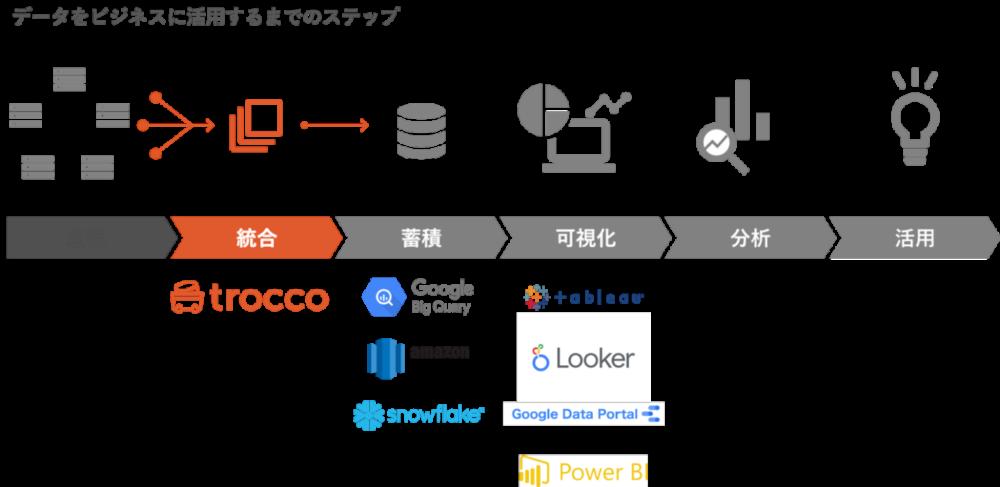
Nishimura: Trocco is called a "managed ETL & workflow service" and the following video has been released. No need for troublesome server and environment management.
Overseas expansion at an early stage, complete translation of all functions by the end of the year
Nishimura: What are your thoughts on global expansion of the product?
Tanabe: We would like to launch overseas business as soon as possible. First of all, this term, we will consider where to start by classifying by region and commercial distribution pattern. There are patterns where you deal directly with end users, and there are patterns where you find a local partner and have them introduce you. There are also patterns that Japanese companies use overseas.
James (Coral Capital): In the future, I would like to talk with Mr. Tanabe about overseas expansion. If we really want to expand overseas, which region should we focus on? In order to maintain the quality of customer success, naturally we have to create a team that can handle that language, so I think it's a pretty big deal. I would like to have a strategy meeting together there. To be honest, it would be more correct to say that Coral invested this time not with the conviction that "Overseas expansion will definitely be possible", but with the idea that Coral will be able to support overseas expansion by investing. .
Tanabe: Thank you. Well, first of all, we would like to find a region where the global version of the existing product is functionally sufficient, and focus on that. By the end of 2022, all functions of trocco will be translated, so I think we will be able to accumulate global sales in the next term.
For that reason, I would like to use the funds raised this time.
Nishimura: The other day, when I was talking with your company's CPO Kobayashi, you said that you are also doing a lot of research on Fivetran, a competing service in the United States. On top of that, you said that you would not lose at all in terms of functionality and usability, so I thought it was reliable. Do you think you can win globally?
Tanabe: He's in charge of product, so I think that's fine, but I personally see things a little more flatly. I think I have to make calm judgments while crossing the business environment and system (laughs). However, trocco is certainly not inferior to Fivetran in terms of functions. Rather, we are now trying to surpass it, and I think we can release products with higher value.
Depending on the market, different connectors may be required, so if we increase the number of connectors according to the region we are expanding into, I think we can also expand overseas in terms of functionality.
Nishimura: I see. In that sense, do you feel that you want more engineers to increase the speed of development?
Tanabe: There is no doubt (laughs)
I didn't start my business with the intention of creating a product
Tanabe: I started working in my area of expertise, and in my second term or so, I developed a general-purpose data engineering PaaS as an extension of that. It was released under the brand "systemN". With the profits raised there, we invited the members in order and came up with trocco to solve the pain and frustration they felt in their work and projects.
Nishimura: You really came out of the scene.
Tanabe: When trocco put out search ads in the alpha release, users started coming in right away. At the same time, it was time for everyone to discuss the future direction of the company, while feeling the response of "Isn't this going to be cool?" When I created the first medium-term plan as an output, I received an email knocking on the door from Daiwa Corporate Investment. It's an eye story.
Nishimura: You didn't register with the intention of creating your own products such as systemN or trocco.
Tanabe: It's going to be a dreamless story. However, it is also true that I started thinking about what kind of company I wanted to be if I was going to do it anyway, even before registering. What I wanted to do was engineer-first, and now I call it engineer-driven. I wanted to be an organization that could overcome the sense of incongruity that I had felt throughout my career. It may be said that the sense of incongruity is a contradiction between work and IT.
Nishimura: What made you feel uncomfortable?
Tanabe: It was the same 20 years ago, and I don't think it will change that much even now, but the bigger the organization, the less the information system department is mainstream in the organization. I felt that I was in a very low position. Especially when I was a member of Think Tank, I felt a sense of incongruity. I was in charge of two major pharmaceutical companies, but the information system department seemed like a support organization for them, while the star departments such as "business planning" and "sales". It may be so due to the nature of the work, but especially in terms of handling within the organization.
But if you take a closer look, without them, the trucks at the distribution center wouldn't be able to stop, and sales wouldn't be recorded. What is this temperature difference? It's like, "You guys (in the information system department) do it." I've been watching that kind of scene for about 7 or 8 years, and I've always felt a sense of incongruity.
Nishimura: It's true that the information systems department has been a sidestream in Japan for a long time.
Tanabe: From there, I moved to DAC, an online advertising company, and around that time Google and other companies began to appear, and the venture culture of the West Coast began to spread to Japan. There is also a movement like Bit Valley. The position and working style of software engineers in Japan has changed. That said, the stars in the advertising industry are sales and creative. Engineering is still a side stream.
In the meantime, web technology has evolved, targeting accuracy has increased with cookie strings, and technology transfers from the financial industry have occurred in the advertising market, such as RTB.
Nishimura: Adtech has changed the very existence of advertising. Digitized advertising products are now traded on the market in real time like financial products.
Tanabe: Yes, for those who have been involved in information systems, a big wave of change has finally arrived. In the midst of all this, I came to the founding of primeNumber through many twists and turns. That's why, for more than ten years through my career, I felt uncomfortable with the fact that engineers were not treated well. It's been 6 or 7 years since I've been working to create a team that would never have that kind of thing.
Nishimura: So you value a culture where engineers and business people work together to create the same product.
Tanabe: It's very important. It is also reflected in the values that 8 Elements wants to cherish. People who sympathize with at least one or two of them have joined the company.
On the business side, there are many members who were originally engineers, and primeNumber's existence is an engineering team, so I would like to make up members only with people who can understand and enjoy their work. I am thinking.
Iemitsu built Nikko Toshogu Shrine?
Nishimura: Mr. Kojima, who has seen Amazon on the west coast up close, do you have any comments?
Kojima: After all, there are many in-house products in the United States. Amazon is not a bookstore, but a tech company, so people who already have the technology have a higher position.
However, what I find interesting here is that Mr. Tanabe is not an engineer. If an engineer wants to raise the position of an engineer, I can understand it, but Mr. Tanabe is in the position of project manager. In a sense, it is the person who uses engineers.
We are saying that such a person will create a company where engineers can work comfortably. Some people in such a position see engineers as "parts that can be replaced". Mr. Tanabe is not an engineer, but as someone who understands the structure of the industry, he says, "Engineers must be rewarded more." In the end, you can't do good things if you don't, and it's not sustainable.
Tanabe: I think this can be said for any job, but a team that completes a project properly is impossible without mutual respect among the members. I think it's the same as master carpenters not being able to do good work if they don't have respect for craftsmen.
Who built Nikko Toshogu Shrine? Iemitsu Tokugawa? boo boo, no. A carpenter, no, a shrine carpenter. That's how I think.
This is the first 500 million yen investment as Coral Capital
Nishimura: Coral Capital has invested in Series B this time, but there was a point of contact last time, right?
James: Yes, we first spoke at Coral in 2019. At that time, there was no connection because other VCs had already decided to invest and it was a follow-up investment. Looking back on my notes from that time, I wonder why I didn't make the investment at the time (laughs).
However, both primeNumber and Coral have grown in many ways since 2019. With the 3rd fund of Coral Capital announced in the summer of 2021, the fund size has grown at once, and the way of thinking about the portfolio has changed. At that time, it was a sense of scale to invest about 50 million yen to 100 million yen for the first time, but this time we invested 500 million yen as the first investment from our company.
Actually, Coral's investment of 500 million yen in primeNumber is the largest investment amount in the past for the first investment.
Nishimura: So you were able to see the size of the upside.
James: Yes, there's a "Why now?" in Coral's investment framework, and it's very clear. The amount of data will increase in the future, and the need for cooperation will also increase. Also, the SaaS market in Japan started late, but recently it has begun to grow strongly. Considering that the size of the domestic software market in Japan is 10 trillion yen, the penetration rate of SaaS is still less than 10%, and there is still room for growth.
Obviously, services like trocco will be important.
Next is "Why Japan?" Why should there be a product unique to Japan? This is also easy to understand, and it is very likely that overseas products will not support SaaS in Japan. For example, I think it would be quite difficult for Fivetran to enter the Japanese market.
Also, customer success is important for a service like trocco. Onboarding also has to be solid. In Japan, unlike overseas, engineers are not produced in-house, so I think it is necessary to provide a lot of hands-on support. That's why it's important to have Japanese support, and I think it's also important to be able to respond properly at the level of service that Japanese people expect. That's why I thought there was value in having a product unique to Japan, and that it would definitely win. At least the domestic category leader will be a product unique to Japan. I was sure of that.
This story is very VC-ish, but when I interviewed trocco's customers, I found out that the solution is really sticking, and in the management interview, I thought that they were a very good team. rice field.
Companies that turn the feedback loop the fastest win
Nishimura: Many startups have emerged from around the world around Amazon's ecosystem, haven't they? From your perspective, Mr. Kojima, how do you see Japanese SaaS?
Kojima: Originally, there is a possibility that a global SaaS company will emerge from any country. If you want to do it globally with SaaS, the product with the fastest feedback loop will win, right? The speed of the feedback loop is important.
That's why I think it's good to start by facing Japanese customers. Therefore, we create a model, such as how quickly we can catch up on needs, what kind of pattern is easy for customers to understand, and what kind of commercial flow is easy to enter. It is important to develop it quickly. Functionality is also important, but I feel that it will be determined by how fast the feedback loop is refined at this point. Just because it's Japan, it doesn't mean you can't go global, and it doesn't mean you can't go because it's Europe.
Recently, SaaS from Australia is coming out little by little. Canva, Attlasian, etc., are unthinkable in the past. How quickly you can get your first recollection in that area.
On the other hand, it's not like you're going to win because you started in a big market. Just because we started in the North American market doesn't mean we can win globally. The company that is winning is the company that is fast.
Nishimura: Do you have any examples?
Kojima: For example, there are still a lot of function-specific SaaS. For CI/CD, there is CircleCI. AWS has a similar product, but everyone uses the paid CircleCI. If you specialize in that field and pick up the needs as early as possible and create a feedback loop, it will become a good product that you want to use even if you pay for it.
Also, AWS is big when you look at the whole, but each development team has a "two pizza rule" (Amazon's rule that all team sizes should be less than two pizzas. ), so it's not that big. I think there are still many areas where we can win if we can pick up and develop use cases as soon as possible.
Moreover, data integration is a buried market. We all know BI and databases and data warehouses, but the ETL part is not recognized as a category. Therefore, there are various functions in AWS, but people who are familiar with AWS want to make everything only with AWS, sometimes it is an option, but it is great for all customers It doesn't necessarily mean that it's easier to use.
Nishimura: Although it still looks like a niche market, it is an area with great potential for specialized SaaS to grow significantly. Thank you for your time today!
+ postsPartner, Chief Editor @ Coral Capital


